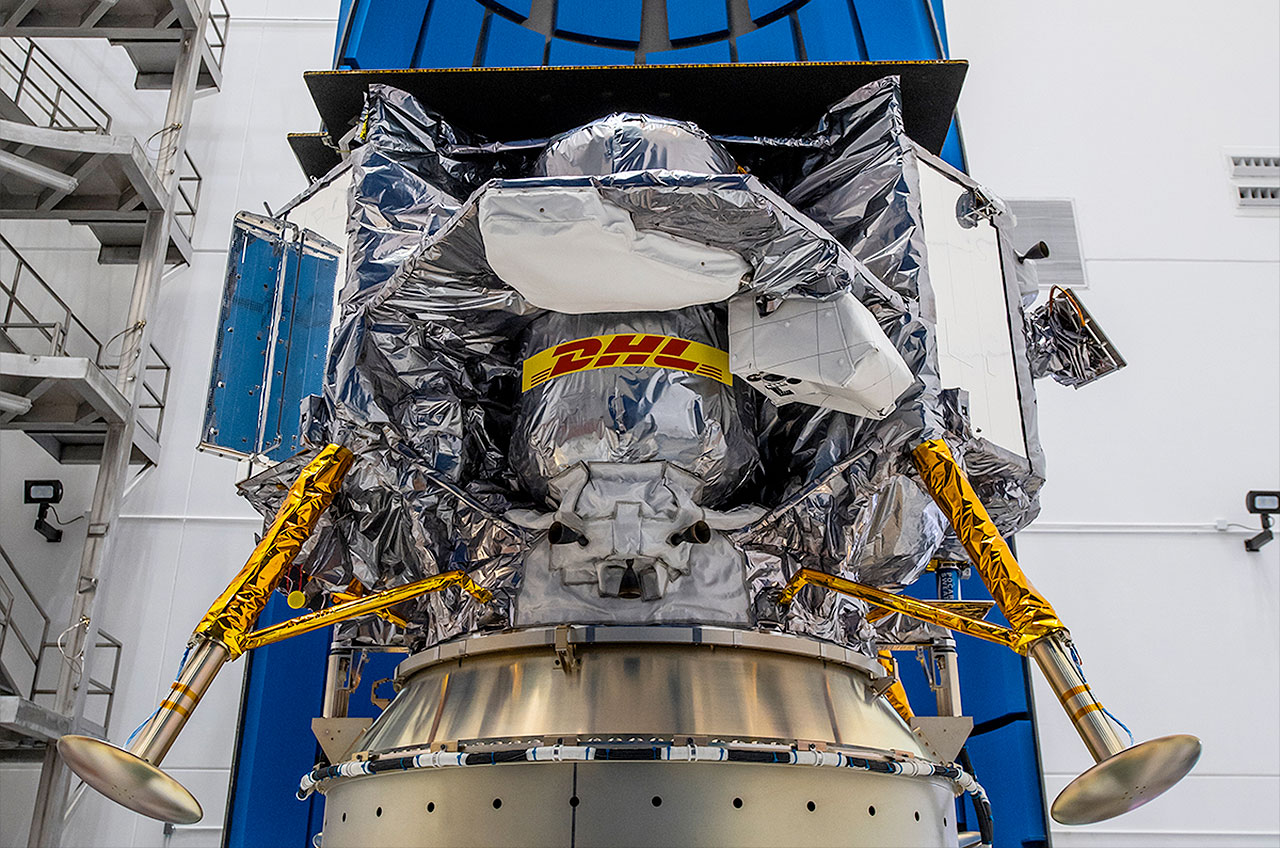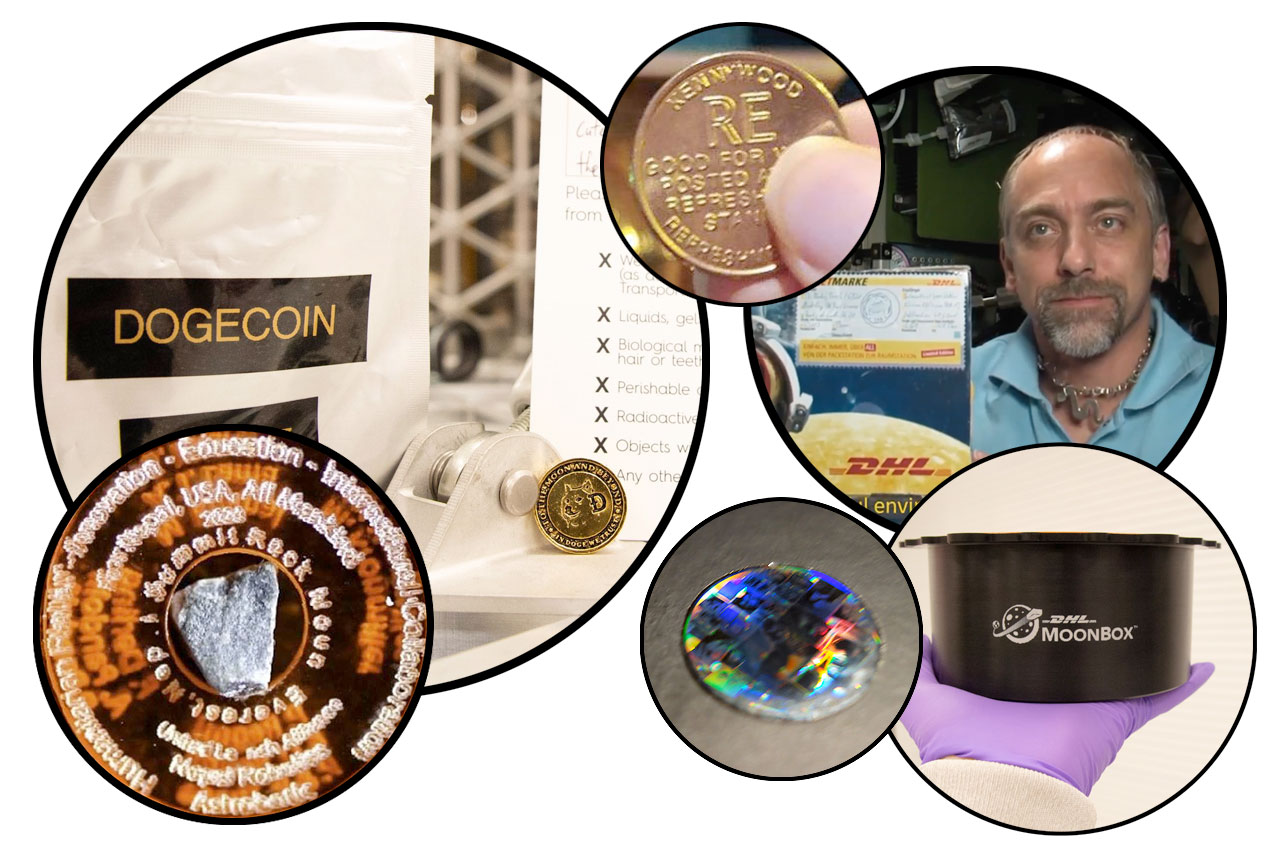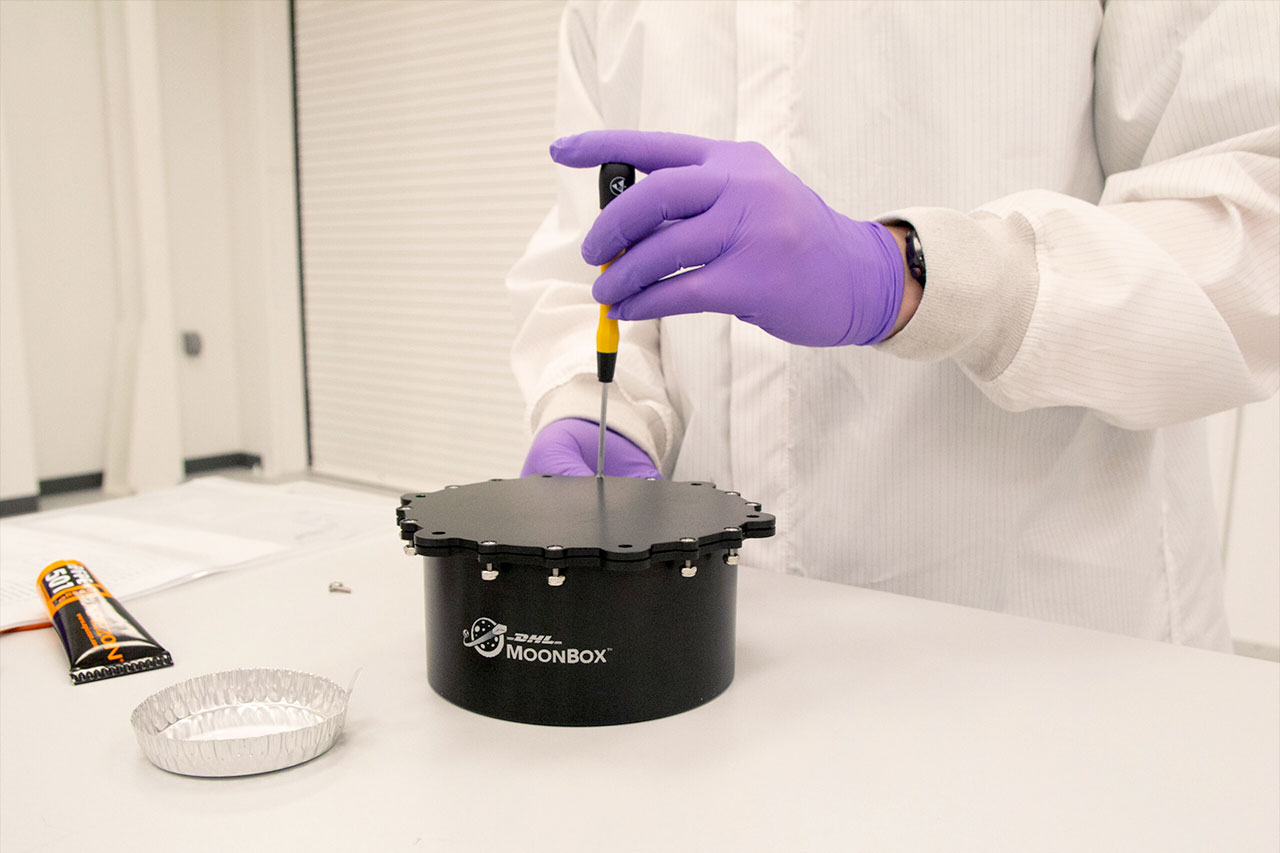DHL delivering Everest rock, 'meme' coin to the moon on Astrobotic lander
'We want to make the moon accessible for all.'

A rock from the top of Mount Everest, a tiny time capsule from Belgium, a physical "meme" coin, a collection of Reddit posts and a letter from a private astronaut who followed his father into space are now all being delivered to the moon. But it is not NASA nor any of the world's other space agencies that are shipping these items to the lunar surface.
It is DHL.
The same American-founded German logistics company that is perhaps best known for its delivery services across Europe has expanded its worldwide service map to include Earth's only natural satellite.
On Monday (Jan. 8), the first-ever DHL MoonBox lifted off on board the first U.S. commercial lunar lander to launch for the moon. The Peregrine probe, built by Pittsburgh-based Astrobotic, left Earth aboard United Launch Alliance's inaugural Vulcan rocket and is now on a path to attempt a history-making touchdown near the Gruithuisen Domes in the Sinus Viscositatis (Bay of Stickiness) on the moon.
"In 2015, we first learned about Astrobotic's ambitious plan to develop a lunar module that would bring cargo to the moon at a significantly lower cost compared to previous missions. Astrobotic had set out to create an affordable solution that would enable everyone to access the lunar surface," a DHL representative said. "Astrobotic's approach aligned with our own mission, which is to connect people and improve lives through reliable and affordable transports around the world."
"This partnership made it possible for individuals to preserve their memories eternally on the moon using the DHL MoonBox, a specialized capsule developed by DHL," the spokesperson told collectSPACE.com. "With this partnership, 'we want to make the moon accessible for all."
Mementos on the moon
"When I first heard of this opportunity, I immediately knew that I wanted to send a letter as a time capsule, both in homage to my father who recently passed, but also in dedication to my kids," Richard Garriott, the son of NASA astronaut Owen Garriott, who in 2008 self-funded his own week-long mission to the International Space Station, said in a promotional video.
"Companies like DHL who are now partnering, that is now opening the door to say that if can be done once, it can be over and over again," said Garriott.

More than 150 mementos are flying in the Peregrine Mission One (PM1) DHL MoonBox. Astrobotic has left it up to each of their clients' discretions as to whether or not to make public the contents of their own "MoonPod" inside the DHL MoonBox.
Belgium is one of six countries that will reach the moon for the first time, assuming a successful landing by the Peregrine spacecraft. Inside its MoonPod is a small nickel wafer micro-etched with new Nanofiche technology to produce what the "Belgium2theMoon" project said was "probably the world's smallest time capsule."
The etchings include "lots of photos, stories of the designer [and] memories made in Belgium."
Reddit user Adam Brodin filled his MoonPod with the best replies to his post on the website about what to send to the moon. Dogecoin, a digital currency themed around a meme that first went viral on Reddit, is sending a physical coin that was underwritten by its fans. (BitMex, a crypto derivatives exchange, is also sending a physical representation of a cyber-currency with its specially designed Bitcoin.)
The residents of Pittsburgh, Pennsylvania, where the Peregrine lander was built, voted to send a token from Kennywood Amusement Park to represent the city.
And Michael Kronmiller arranged for a rock from the peak of the tallest mountain on Earth to fly in his MoonPod. Kronmiller was inspired by NASA astronaut Scott Parazynski, who carried four small pieces of Apollo 11 moon rock to Everest's summit in 2009. A year later, a piece of the mountain and the same lucite-encased lunar samples were flown and mounted aboard the International Space Station.
Delivered by DHL
For its part, DHL collected 100,000 images from people who responded to its "Who do you love to the moon and back?" campaign and is flying them on a data stick loaded into one of the MoonPods.
The company also did what it does best — deliver packages.
"DHL has supported Astrobotic with deliveries of materials and supplies for the lunar lander during its development and preparation for its launch, as well as with the deliveries of items that were shipped with the DHL MoonBox service," the representative said.

Astrobotic is now accepting reservations through its website for its next DHL MoonBox to fly on a future mission to the moon. Items must be inert — they cannot use electricity or send or receive data — and fit within one of three different size MoonPods ranging from 0.5 inches wide and 0.125 inches tall (1.3 by 0.32 centimeters) to 1 inch wide and 2 inches tall (2.5 by 5.1 cm).
Prices start at $460 and climb to $25,800, plus shipping.
Each MoonPod is assigned a DHL MoonBox serial number, but no DHL tracking number as of yet.
"All customers who have purchased a DHL MoonBox delivery will receive proactive updates as the mission occurs, including launch, spacecraft deployment, lunar orbit insertion and landing," the DHL rep told collectSPACE. "The tracking system may be modified for future missions, as the service becomes more established."
Follow collectSPACE.com on Facebook and on Twitter at @collectSPACE. Copyright 2024 collectSPACE.com. All rights reserved.
Get the Space.com Newsletter
Breaking space news, the latest updates on rocket launches, skywatching events and more!
Join our Space Forums to keep talking space on the latest missions, night sky and more! And if you have a news tip, correction or comment, let us know at: community@space.com.

Robert Pearlman is a space historian, journalist and the founder and editor of collectSPACE.com, a daily news publication and community devoted to space history with a particular focus on how and where space exploration intersects with pop culture. Pearlman is also a contributing writer for Space.com and co-author of "Space Stations: The Art, Science, and Reality of Working in Space” published by Smithsonian Books in 2018.In 2009, he was inducted into the U.S. Space Camp Hall of Fame in Huntsville, Alabama. In 2021, he was honored by the American Astronautical Society with the Ordway Award for Sustained Excellence in Spaceflight History. In 2023, the National Space Club Florida Committee recognized Pearlman with the Kolcum News and Communications Award for excellence in telling the space story along the Space Coast and throughout the world.










